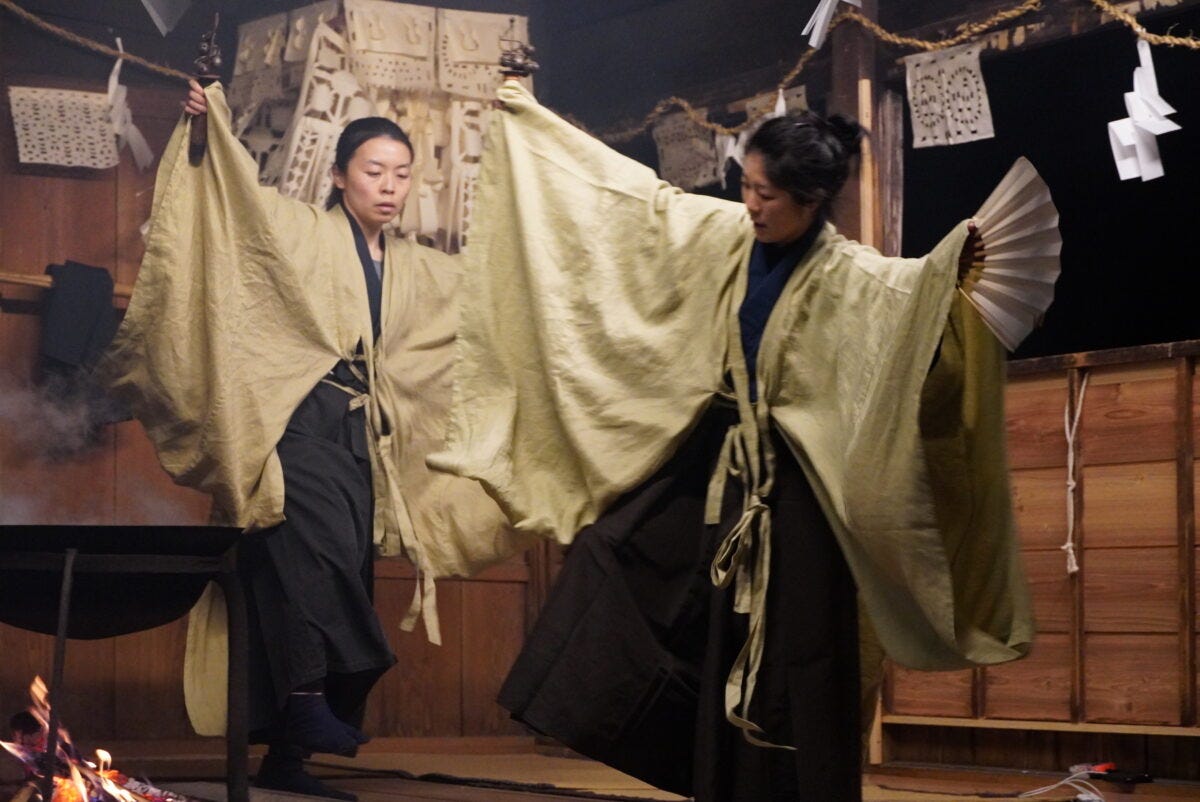Crypto Village Newsletter #47 - 10/15
Welcome back to our News Letter!
A huge thank you to all our new subscribers! This newsletter is brought to you by Crypto Village, where we share the latest updates on the Nishikigoi NFT project, Japanese local NFT initiatives, and much more.
The News of the Week:
A New Challenge in the Age of Population Decline
This is the the last part of a blog post series originally published in a Japanese magazine.
Beyond the Borders: Outsiders Become “Supporters” to Keep Local Traditions Alive
Traditionally, local residents have been the primary guardians of regional culture, responsible for protecting and passing it down through generations. However, as depopulation accelerates in many areas, maintaining these traditions with local power alone is becoming increasingly difficult. This crisis is fostering a new model of succession that actively recruits support from outside the community.
A compelling example is the Fukura Kabuki in Sai Village, Aomori Prefecture. Facing a serious shortage of successors due to the aging population of fishermen and ongoing depopulation, the community began inviting performers from outside the village in 2016. By the 2025 performance, more than half the cast were from outside Aomori Prefecture. This groundbreaking approach demonstrates a new philosophy: the torchbearers of traditional culture don’t necessarily have to be native residents.
Another inspiring case is the Mukagata Okiyome Festival in Tenryu Village, Nagano Prefecture. People living in major cities like Tokyo are traveling regularly to the village, not as mere tourists, but as dedicated “Supporters.” They learn to play the “Gaku” (flute) and participate actively in the festival. These supporters are not just casual visitors; they are individuals who deeply understand the tradition and play a crucial role in its succession. This truly represents a “New Hometown” built on passion for culture, transcending physical distance.
These pioneering efforts clearly illustrate that traditional culture is not exclusive to “locals.” They show that anyone who loves and cherishes a culture can step up and become one of its stewards.
Strict Traditional Rules Are Changing
Traditional cultures often came with strict rules—such as “only the eldest son may participate” or “limited to specific age groups.” These regulations were long considered vital for preserving the authentic form of the tradition by ensuring specific roles were rigorously maintained. However, with the current severe shortage of participants, these “time-honored customs” are now being dismantled.
A prime example is the Tamashiki Shrine Kagura in Kazo City, where the lack of performers led to the removal of long-standing regional restrictions and, significantly, the inclusion of women. Similarly, the Shiki Sanban in Uruido, Hasuda City, saw its “eldest son only” rule abolished, along with an expansion of the age range for participants.
These cases suggest that for traditional culture to survive, the focus is shifting. “Form,” defined by lineage or age, is now giving way to “spirit”—the genuine desire to connect the culture to the future. It’s a powerful testament to prioritizing passion and commitment over rigid historical requirements.
The Future of Tradition: Evolution, Not Decline
Japanese traditional culture is certainly confronting a major challenge in the face of depopulation. Yet, this challenge is not simply a sign of decline; rather, it’s becoming an opportunity to re-examine long-standing customs and rules, paving the way for a more flexible future.
The inclusion of women, support from outside the community, and the loosening of strict historical rules are all acts of “evolution,” transforming tradition into something more diverse and open. This shift highlights the profound potential for anyone who loves a culture to become its steward—not just a select few.
Tradition is not a fixed relic; it is a living culture that breathes and changes with the times. As we navigate the complex issue of population decline, the key lies in cherishing the essence of tradition while boldly embracing change and exploring new forms.
This fearless approach to innovation is the critical next step in ensuring that Japan’s remarkable cultural heritage is successfully passed on to the next generation. It’s time to view change not as a threat, but as the engine of survival.
■ Socials
Nishikigoi NFT Official Website
■NFT Marketplace
Opensea



